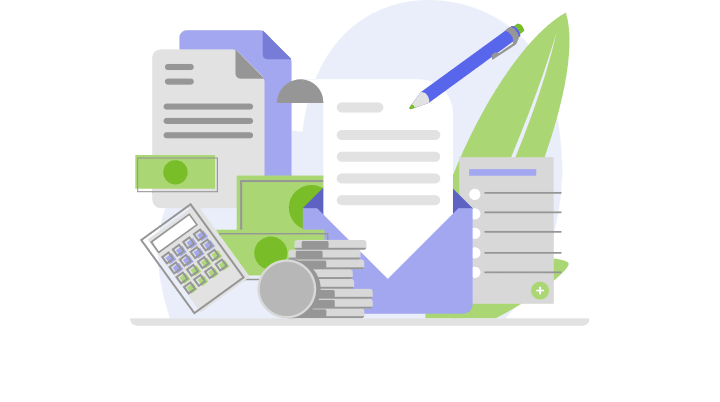
It reduces errors and boosts productivity in your financial system. An efficient Invoice to Cash cycle is more than just a financial necessity—it’s a strategic advantage. By addressing challenges, leveraging technology, and optimizing each step, businesses can enhance cash flow, reduce risks, and improve overall financial stability. Invoice to Cash https://www.bookstime.com/ (I2C) is a critical financial process within accounts receivable that spans the entire journey from issuing an invoice to receiving payment from a customer. This process plays a central role in maintaining a business’s cash flow, ensuring liquidity, and supporting operational stability.

Key Features of Invoice-to-Cash Billing Software
- For instance, if your submitted invoices routinely contain errors, expect payment delays and disputes to be shared.
- In I2C, the process starts with issuing an invoice regardless of how the order was placed.
- Automation helps reduce dispute cycle time and prevents revenue leakage.
- When handled with precision and intention, I2C can become a competitive advantage, unlocking liquidity, enhancing customer relationships, and driving sustainable growth.
- In this guide, we’ll break down each stage of the end-to-end order to cash process, providing practical tips and insights to help you master this critical business function.
Market volatility, inflation, labor shortages, and global supply chain disruption have made real-time visibility and rapid decision-making non-negotiable. In this new era, every day you delay automation is another day your business bleeds efficiency, speed, and insight. But the value of automation extends far beyond the initial metrics. What invoice unlocks is not just efficiency but strategic momentum. By eliminating the friction that once bogged down workflows, companies create space to focus on innovation, expansion, and deeper customer engagement.
Benefits of Streamlining Your Invoice to Cash Cycle
Security for your customers’ sensitive information is one of the most crucial elements of invoice-to-cash. Billing software should provide secure payment processing options, including encryption and tokenization, to protect against fraud and data breaches. Most billing software will also provide you with detailed reports and analytics about your invoicing process. You’ll be able to access key metrics, like revenue growth, churn rate, customer lifetime value (CLV), and other financial KPIs.

Automation is the New Standard

It’s also crucial to measure adoption just as rigorously as you measure financial ROI. Use this insight not only to optimize usage, but to spark a broader culture of innovation across finance, IT, and beyond. Use stakeholder workshops and listening sessions to surface pain points and expectations. These conversations do more than inform configuration they build emotional buy-in. When people see their feedback reflected in the solution, they’re far more likely to champion it.

Visibility That Drives Action
Despite automation, businesses still face challenges such as inconsistent data, delayed dispute resolution, and complex multi-currency transactions. Addressing these issues requires standardization, data governance, and continuous process optimization. But configurability is more than a convenience QuickBooks Accountant it’s a strategic advantage. It allows finance teams to experiment, iterate, and scale without overhauling core systems. It empowers decision-makers to launch region-specific policies, refine customer segmentation tactics, and adapt to regulatory shifts all from within a centralized, unified platform. Invoice’s multiple payment method support allows businesses to offer flexibility without creating back-end chaos.
- The closed invoices relieve collections of further action and free sales to take additional orders.
- However, not all activities in Order to Cash are part of Invoice to Cash.
- Optimization of the invoice to cash (I2C) process, also known as the order to cash (O2C) cycle, is crucial for modern businesses who want to improve financial results and customer satisfaction.
- Invoice to cash is important because businesses need to track the money that is owed to them as well as what money they receive.
Increase Revenue by X%: The Invoice-to-Cash Advantage
- And most importantly, it gives finance leaders the clarity and confidence to drive innovation, not just survive the next quarter.
- A holistic approach ensures the company has enough cash to order supplies, pay workers, and cover other financial obligations.
- Shipping and Delivery is the physical (or, sometimes, digital) handoff.
- Automating the invoice-to-cash process accelerates cash flow, reduces errors, and improves efficiency by eliminating manual tasks like invoice creation and payment tracking.
- Discrepancies between systems, incorrect data entry, and lack of visibility into payment statuses are some challenges businesses face when manually managing invoicing processes.
Below, we break down the steps involved in the order to cash process flow to provide a clear and concise overview of each stage. The Invoice to Cash process flow, often referred to as Invoice to Cash invoice-to-cash (I2C) or part of the Order to Cash (O2C) cycle, represents one of the most critical financial workflows for any business. It bridges the gap between generating an invoice and receiving payment from customers. An efficient I2C process ensures healthy cash flow management, reduces Days Sales Outstanding (DSO), and strengthens customer relationships by ensuring transparency and speed in every transaction. The entire process of I2C consists of invoice issuance to customers, monitoring, dunning, collecting payments, and reconciliations.
